Faculty Books
Culture, Communication, and Cooperation
Patricia Covarrubias
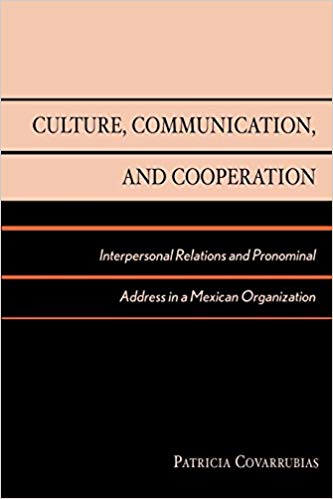
For those who find it useful to conceive of a language as a meaning-conveying instrument embedded in a cultural system, this brief, well-written treatment of pronominal address in Spanish will hold few surprises, but it will provide welcome and well-reasoned documentation of the major positions, supplemented by equally welcome expansions and elaborations of familiar points.
Speakers of Spanish tend to address some interlocutors on some occasions using second-person verb forms, while addressing others, or the same on different occasions, using third-person forms, variably reinforcing the verbal morphology with the pronoun tú in the first cases and usted in the second.
The author investigates alternative forms of what she calls “pronominal address” (irrespective of whether the pronoun is actually used), with data obtained from observations of workers at a construction company in Veracruz, Mexico, and from their own explanations of why they use one address form or the other.
A good sample of the data is provided, presented in standard Spanish orthography with good, readable translations into English.
For theoretical underpinning, the author offers the ethnography of speaking (Hymes 1962) and speech codes (Philipsen 1997).
Available for purchase here.
The Book of Archives and Other Stories from the Mora Valley, New Mexico
Gabriel Meléndez
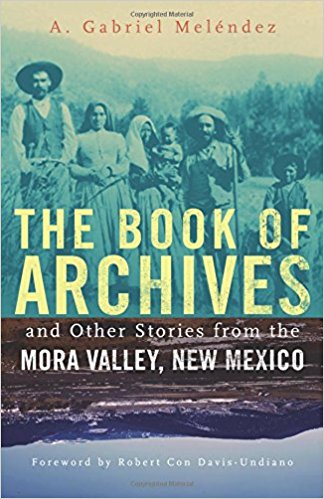
A native of Mora with el don de la palabra, the divine gift of words, Meléndez mines historical sources and his own imagination to reconstruct the valley’s story, first in English and then in Spanish. He strings together humorous, tragic, and quotidian vignettes about historical events and unlikely occurrences, creating a vivid portrait of Mora, both in cultural memory and present reality. Local gossip and family legend intertwine with Spanish-language ballads and the poetry of New Mexico’s most famous dueling troubadours, Old Man Vilmas and the poet García. Drawing on New Mexican storytelling tradition, Meléndez weaves a colorful dual-language representation of a place whose irresistible characters and unforgettable events, and the inescapable truths they embody, still resonate today.
Available for purchase here.
A Poetry of Remembrance: New and Rejected Works
Levi Romero
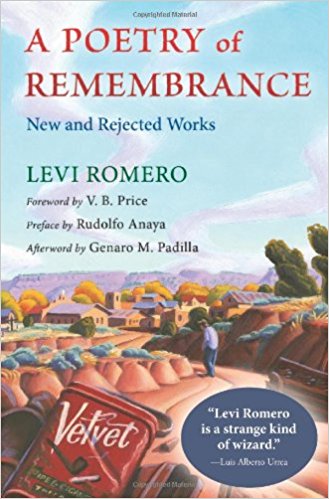
Through familiar details--leaking faucets and lowriders, chicharrones and chicken coops--Levi Romero remembers familia, comunidad, and tradiciones from his upbringing in northern New Mexico's Embudo Valley. Alongside his training and jobs in the building trades and the architectural profession, and now a teacher, his writing has maintained and nurtured his connection to the unique people and land he knows so well and that have seldom been represented in American poetry.
2009 Southwest Book of the Year, Tucson-Pima County Public Library
Available for purchase here.
Querencia: Reflections on the New Mexico Homeland
Levi Romero, Vanessa Fonseca-Chávez, Spencer R. Herrera
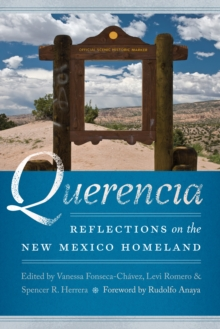
New Mexico cultural envoy Juan Estevan Arellano, to whom this work is dedicated, writes that querencia "is that which gives us a sense of place, that which anchors us to the land, that which makes us a unique people, for it implies a deeply rooted knowledge of place, and for that reason we respect it as our home."
This sentiment is echoed in the foreword by Rudolfo Anaya, in which he writes that "querencia is love of home, love of place." This collection of both deeply personal reflections and carefully researched studies explores the New Mexico homeland through the experiences and perspectives of Chicanx and indigenous/Genízaro writers and scholars from across the state. The importance of querencia for each contributor is apparent in their work and their ongoing studies, which have roots in the culture, history, literature, and popular media of New Mexico. Be inspired and enlightened by these essays and discover the history and belonging that is querencia.
Available for purchase here.
Sagrado: A Photopoetics across the Chicano Homeland
Levi Romero, Spencer R. Herrera
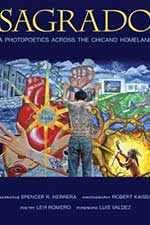
Un lugar sagrado, a sacred place where two or more are gathered in the name of community, can be found almost anywhere and yet it is elusive: a charro arena behind a rock quarry, on the pilgrimage trail to Chimayó, a curandero's shrine in South Texas, or at a binational Mass along the border. Sagrado is neither a search for identity nor a quest for a homeland but an affirmation of an ever-evolving cultural landscape. Embedded at the heart of this remarkable book, in which prose, photographs, and poems complement each other, is a photopoetic journey across the Chicano Southwest.
Available for purchase here.
Among Cultures: The Challenge of Communication
Bradford J. Hall (Author), Patricia O. Covarrubias (Contributor), Kristin A. Kirschbaum (Contributor)
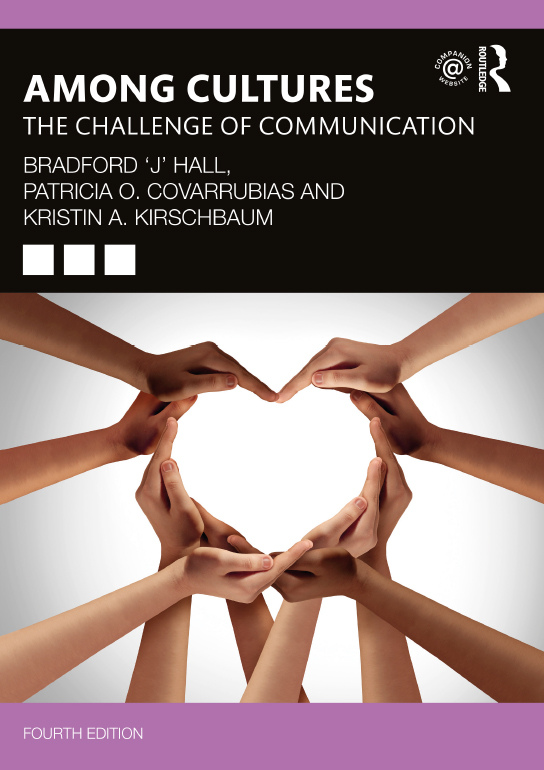
Among Cultures: The Challenge of Communication, Fourth Edition explores intercultural communication and the relationship between communication and culture, using narrative as a common and compelling thread for studying intercultural interactions. Anchored in the position that people make sense of their worlds through choosing and telling narratives to themselves and others, this text is replete with narratives and stories. Chapters address key aspects of intercultural communication, including verbal and nonverbal communication; stereotypes and bias; identity; conflict; diversity; and ethics. Using an interpretive approach to intercultural communication, the text helps students understand that although a person may appear different, his/her common sense is quite reasonable within a particular interpretive context. Resources are included to help students understand and explain the reasonableness of other cultural systems.
The text includes activities for students to complete while reading, including self-assessments and nonverbal self-knowledge tests. Reflection questions within and at the end of each chapter promote thinking and discussion of each topic. With its unique approach to studying and understanding intercultural communication via real-life narratives, this text facilitates a deep understanding of the cultural aspects in communication. In providing the narratives of others, it encourages students to tell their own stories and build a strong foundation for communicating across cultures.
Available for purchase here.
The Pueblo Food Experience
Dr. Patricia M. Perea and Roxanne Swentzell
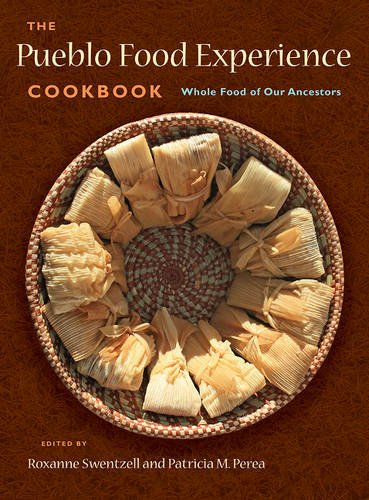
Available for purchase here.
Land of Disenchantment: Latina/o Identities and Transformations in Northern New Mexico
Michael L. Trujillo
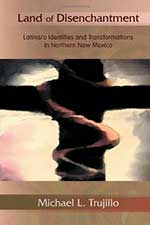
"Michael Trujillo's Land of Disenchantment is astonishing, both for its scholarly depth and, more importantly, for its honesty. As an ethnographic study of the Espanola Valley it offers a searing account of the negative realities that trouble Nuevomexicanos: poverty, drugs, violence. And, yet, Trujillo probes into these social and material difficulties with a spirit that suggests how creativity, identity, and will to survive emerge from tragedy to produce a positive aesthetics of joking, storytelling, weaving, and cultural ritual that keeps people alive to their long history and to their dreams."
--GENARO PADILLA, Associate Professor of English, University of California at Berkeley
NEW MEXICO'S ESPANOLA VALLEY IS SITUATED IN THE NORTHERN PART OF THE state between the fabled Sangre de Cristo and Jemez Mountains. Many of the Valley's communities have roots in the Spanish and Mexican periods of colonization, while the Native American Pueblos of Ohkay Owingeh and Santa Clara are far older. In this experimental ethnography, Michael Trujillo presents a vision of Espanola that addresses its denigration by neighbors--and some of its residents--because it represents the antithesis of the supposedly "positive" narrative of New Mexico. Contradicting the popular notion of New Mexico as the "Land of Enchantment," a fusion of race, landscape, architecture, and food into a romanticized commodity, Trujillo probes beneath the surface to reveal the struggle and pain brought about by colonization and the transition from a pastoral to an urban economy, as well as the limits of common ethnographic representations. Land of Disenchantment contains both Trujillo's original ethnography and his explorations of creative works by Valley residents Policarpio Valencia, Jim Sagel, Teresa Archuleta, and G. Benito Cordova.
Available for purchase here.
Nahui Olin Sin Principio ni fin
Patricia Rosas Lopategui

Without beginning or end: Life, Work, and Various Inventions
María del Carmen Mondragón Valseca, also known as Nahui Olin (b. Tacubaya, today Mexico City, July 8, 1893 – d. Mexico City, January 23, 1978) was a Mexican artist's model, painter and poet.
Thorough research and library searched with private collection sourced references. Polymer based matt color cover, printed on both sides. Well made binding and high quality page paper.
Available for purchase here.
El Asesinato de Elena Garro
Patricia Rosas Lopategui
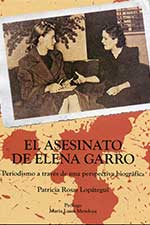
Available for purchase here.
The Borders in All of Us: New Approaches to Global Diasporic Societies
Williams, Vasquez, Furusa Little

The Borders In Us All: New Approaches to Global Diasporic Societies is a collection of scholarly essay.
This volume is unique in its approach to historical Diasporas in that it explores some of the cross currents within Diasporic communities in Africa, Asia, Latin American and the United States providing new insight into America's new ethnic majorities.
In eighteen chapters the authors examined the historical, political dynamics, and the language/literary traditions and the arts and creative expressions of several ethnic and global Diasporic communities.
Available for purchase here.
Making Aztlan: Ideology and Culture of the Chicana and Chicano Movement: Ideology, 1966-1977
Irene Vasquez

Available for purchase here.


